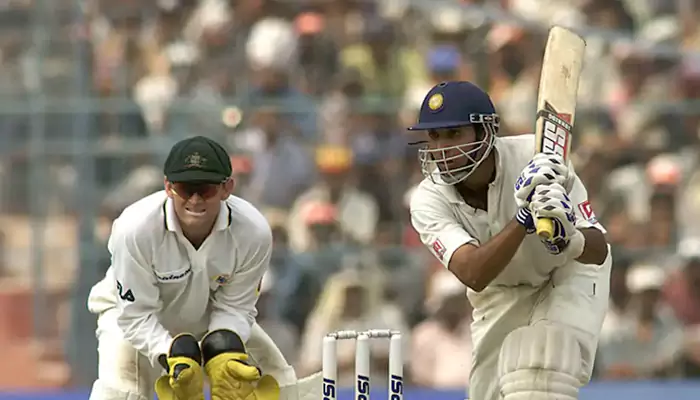
In March 2001, at Kolkata’s Eden Gardens, India defied history, humbled the world’s most dominant team, and transformed despair into an enduring symbol of resilience
Every August, as the nation celebrates its long journey of grit, sacrifice, and renewal, sports present their own stories of defiance. Over 79 years of independent India, there have been contests where the tricolour did more than flutter in the stands—it symbolised courage under fire.
Few moments capture that spirit more vividly than the Eden Gardens Test of 2001, when an Indian cricket team, facing humiliation, stood tall against the formidable Australians led by Steve Waugh and crafted one of the greatest comebacks in sporting history.

Credit: ESPN
The scoreboard told a harsh story. Australia had amassed 445 in their first innings, Steve Waugh scoring his 25th Test century with his typical mix of patience and ruthlessness. In response, India faltered to 171 all out, thwarted by Glenn McGrath's relentless accuracy and Jason Gillespie's hostility.
The follow-on was imminent—a fate only twice before in cricket's long history had been overturned to victory. Against a side on a 16-match winning streak, even hope seemed a luxury. Yet, Sourav Ganguly's men refused to give in. The dressing room, though burdened by the deficit, clung to a quiet belief.

Credit: ESPN
Laxman & Dravid ascend to immortality
Promoted to the No. 3 position after a fluent 59 in the first innings, VVS Laxman started his second innings with timing that bordered on artistry. Every stroke appeared dipped in elegance—cover drives caressing the turf, on-drives purring through mid-on, and delicate late cuts teasing the slips. When Rahul Dravid joined him after Tendulkar's dismissal, the situation was still precarious. But together, they forged a partnership that would become cricketing folklore.

Credit: ESPN
For ten hours, the pair batted like sculptors chiselling away at inevitability. Their 376-run partnership was not just about scoring runs; it was a masterclass in application. Dravid's 180 was built on monk-like patience; his forward defense was as impenetrable as a fortress wall.
Laxman's 281, later voted the greatest Indian Test innings by Wisden Asia Cricket, was a symphony of fluency under pressure. By the end of day four, India had turned a position of hopelessness into an unlikely advantage as they scored 657 in the second innings.

Credit: ESPN
While the batting staged a comeback, victory depended on wickets. Harbhajan Singh, supported strongly by Ganguly despite a mixed career up to that point, seized the opportunity. Bowling with a combination of guile and aggression, he repeatedly broke through Australian defences.
His hat-trick in the first innings—Ponting, Gilchrist, Warne—was the first ever by an Indian in Test cricket. In the second innings, with the pitch offering spin, he dismantled the middle order.
By the end of the match, his 13 wickets stood as a statement: India had discovered a new spin spearhead.

Credit: ESPN
On the final afternoon, with Australia at 166 for 3, chasing 384, the game still hung in the balance. Steve Waugh was at the crease, the air thick with tension. Then Ganguly threw the ball to Sachin Tendulkar.
The crowd roared, more in hope than expectation. What followed was decisive—three quick wickets from the maestro's leg-spin, including the priceless scalp of Waugh. From that moment, Australia unravelled.

Credit: ESPN
When McGrath was plumb by Bhajji’s doosra and the Australians were bowled out for 212, the victory margin—171 runs—barely told the story. This was only the third time in Test history that a team had won after being asked to follow on. More than the statistical rarity, it was a spiritual revival for Indian cricket.